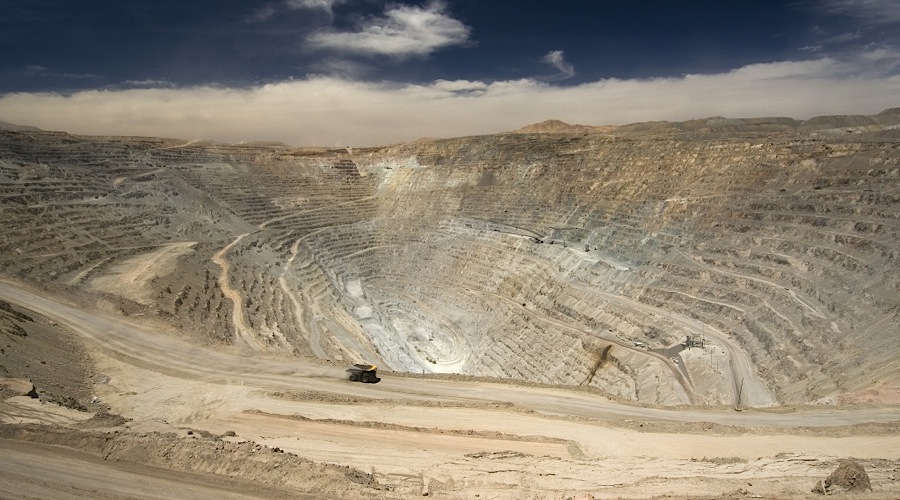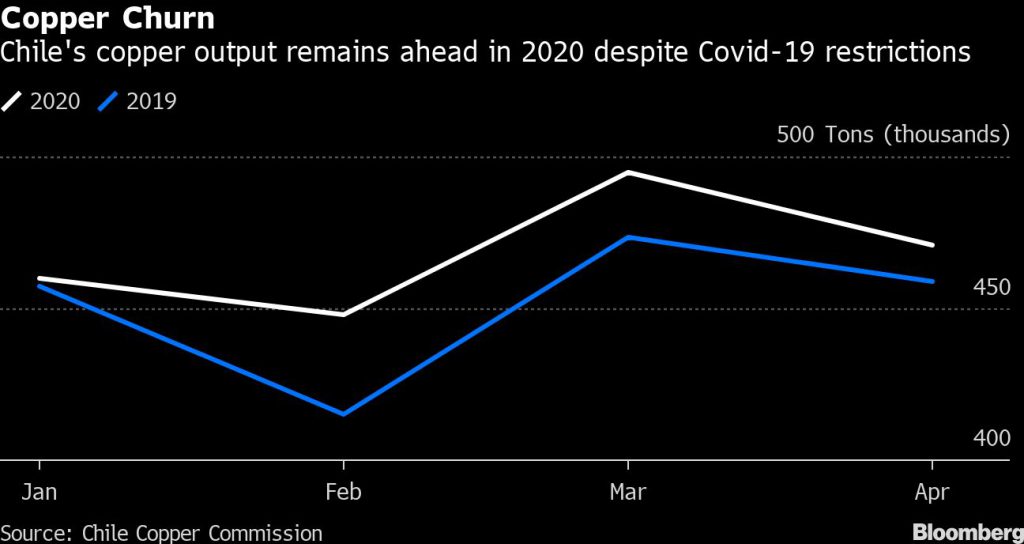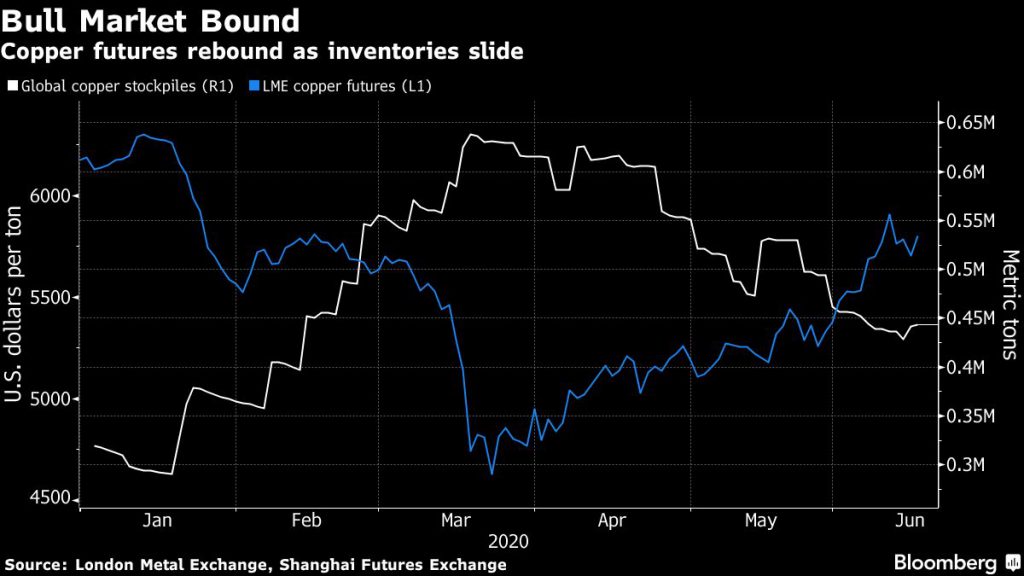
Copper traders are being bombarded with possible price drivers right now — from $1 trillion in U.S. infrastructure spending to a second wave of Covid-19 in China. For Chile’s official forecaster, the upshot is cautiously optimistic.
Prices probably will average more than $2.50 a pound this year, according to Marco Riveros, who heads government agency Cochilco. So far this year, the average has been just below that level.
With demand supported by a recovery in Europe and President Trump’s infrastructure proposal, there’s incentive for Chilean mines to continue operating at near capacity levels, Riveros said in an interview Tuesday.
In a country that produced 5.8 million tons of the red metal last year, Covid-19 disruptions could cost as few as 75,000 tons or as many as 400,000 tons, the agency said. Somewhere in the middle of that range, about 200,000 tons, would be a reasonable expectation, he said.
So many variables make precise short-term predictions difficult. Companies are constantly reformulating their mining plans as they chase productivity gains while operating with reduced workforces. As more workers fall ill, Chilean unions are calling for limiting operations.
While health has to be the top priority and some mines may struggle to maintain output, Cochilco’s vision is for the industry to be viewed with optimism, Riveros said.
“Particularly in Chile, mining has always had the ability to push economic development, and in this case, economic recovery forward,” he said.

In a bid to ease labor tensions and keep mines running, the government is working on ways to improve Covid-19 transparency.
Mining Minister Baldo Prokurica is looking into disseminating infection data from local health authorities, rather than just from companies. The government may also report the results of audits into how well mines are complying with virus-fighting protocols, he said in an interview Monday.
In contrast with neighboring Peru, Chile opted to continue mining as the virus hit, implementing safety measures and demobilizing non-essential staff without sacrificing much output. For Prokurica, it’s a balancing act of keeping workers healthy and much needed export revenue flowing.
“We are going to do everything in our capacity so the country can assure workers of their jobs, and at the same time have continuity, while protecting the health and safety of our workers,” he said.

Tensions ratcheted up last week after a worker at state-owned Codelco’s Chuquicamata mine died of the disease. The minister dispatched additional inspectors to monitor the situation at mines, with 1,600 evaluations conducted so far.
On the weekend, seven groups representing workers and contractors issued a call for the government to reevaluate continuing mining operations. Late Tuesday, the Federation of Copper Workers said union leaders weren’t allowed to access the Chuquicamata mine to inspect protocol compliance in the latest example of management’s “arrogant conduct.”
Prokurica said the industry is taking extraordinary measures to safeguard staff, including testing, distancing and demobilizing about half the total workforce. While infections are rising in the nation, mining has done better than other industries, with just 0.5% of the workforce falling ill, he said.
“There is no normalcy in the copper industry right now,” Prokurica said. “We are in the most difficult phase of the pandemic in Chile.”
(By Jackie Davalos and James Attwood, with assistance from Millie Munshi)
Comments